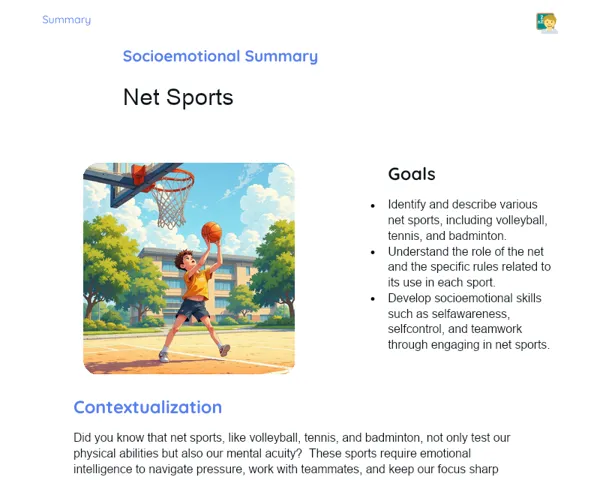Goals
1. Understand the significance of ethical behaviour in ensuring healthy sports participation.
2. Define what ethical conduct means within the realm of sports.
3. Reflect on real-life examples of both ethical and unethical conduct in sports.
4. Discuss how ethical principles apply across various sports disciplines.
Contextualization
In the sporting arena, ethics is crucial for fostering fair, respectful, and safe competition. Notable incidents, such as Lance Armstrong's fall from grace in professional cycling due to doping, highlight how poor ethical standards can derail careers and tarnish the reputation of entire sports. Ethics isn’t merely about abiding by rules; it's about respecting your opponents, accepting the referee's decisions, and playing with integrity. Many professionals in sports, including coaches and managers, receive training in sports ethics because how they conduct themselves can directly influence the image of their clubs and the brands that sponsor them.
Subject Relevance
To Remember!
Sports Ethics
Sports ethics encompasses the values and principles that guide sports practices in a fair, respectful, and safe manner. It includes adherence to the rules, respect for opponents, referees, and the true spirit of sportsmanship, promoting healthy and honest competition.
-
Respect the rules of the game.
-
Treat opponents with dignity.
-
Accept referee decisions without undue protest.
-
Champion sportsmanship and fair play.
Impact of Ethical Conduct
The ethical behaviour of athletes significantly influences the image of sports and their careers. Unethical actions, such as doping or match-fixing, can ruin careers and harm the reputation of entire sporting codes.
-
Lack of ethics can result in suspensions and bans for athletes.
-
Unethical behaviour damages the credibility of sports.
-
Ethical conduct fosters integrity and trust in sports.
-
Athletes who demonstrate ethical behaviour are more respected.
Sports Ethics Codes
Numerous sports bodies have established codes of ethics that define standards and guidelines for athletes, coaches, and sports professionals. These codes strive to ensure everyone involved maintains integrity and respect throughout their participation in sports.
-
Set standards for behaviour for all involved in the sport.
-
Promote integrity and respect in all sporting activities.
-
Regularly reviewed and updated to reflect the evolving landscape of sports.
-
The adoption of ethics codes is widespread in sports leagues and federations.
Practical Applications
-
The case of Lance Armstrong, who lost his titles due to doping, serves as a stark example of the devastating consequences of lacking ethics in sports.
-
Many sports leagues like the NFL and NBA enforce stringent ethics codes that all athletes and coaches are required to follow.
-
In training programmes for athletes, such as soccer academies, ethics is a foundational component of building character.
Key Terms
-
Sports Ethics: A framework of values and principles guiding fair and respectful sports practice.
-
Ethical Conduct: Behaviour that adheres to established ethical values and principles.
-
Doping: The use of illegal substances to enhance athletic performance.
-
Ethics Codes: Guidelines and standards governing the conduct of athletes and sports professionals.
Questions for Reflections
-
In what ways can ethics shape the culture of a sports discipline and affect public perception?
-
What challenges do athletes face in upholding ethical behaviour within a highly competitive setting?
-
How could applying ethical principles in sports influence other areas in life, such as education and work?
Practical Challenge: Navigating Ethical Decisions in Sports
Students will engage in a practical exercise where they will assume various roles in a sports context and make decisions based on fictitious scenarios involving ethical dilemmas.
Instructions
-
Divide the students into groups of 4 to 5.
-
Assign roles and fictitious scenarios to each group.
-
Groups should discuss and determine the best course of action in the scenarios, justifying their choices.
-
Each group will present their decisions and rationale to the class.
-
Facilitate a discussion on the chosen actions and ethical implications of each scenario.



